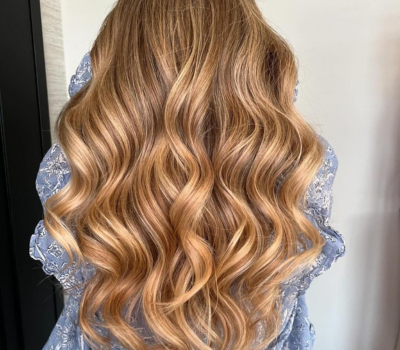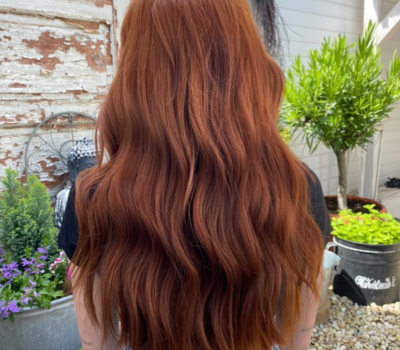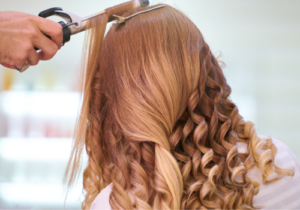Understanding hair bleaching
When it comes to hair care, few processes are as sought-after and dreaded as bleaching. Whether you want to go for a bold platinum blonde or simply lighten your natural color, understanding the ideal duration for bleaching without damaging hair is crucial to hair health. Let's explore the complex process of bleaching and the associated risks to hair and scalp.
The hair bleaching process
What is hair bleaching?
Hair bleaching is a chemical process that removes the melanin responsible for hair's natural color. The process uses powerful oxidizing agents, such as hydrogen peroxide, to penetrate the hair cuticle and oxidize pigments. This treatment prepares hair for lighter or more vibrant coloring.
How does the bleaching process work?
Bleaching begins by opening the cuticles to allow bleaching agents to penetrate the hair fiber. These agents then oxidize the natural pigments, lightening the hair color. The success of this process depends on a number of factors, including product concentration, application time and technique. Careful monitoring of each step is crucial to avoid damage.
The risks of hair bleaching
Potential damage to hair structure
The bleaching process can cause substantial damage to the hair fiber. Repeated cuticle opening and intense oxidation weaken the hair, making it more prone to breakage, dryness and split ends. Without proper care, this fragility can lead to a cycle of deterioration that is difficult to reverse.
Risks for the scalp and skin
In addition to the risks to hair structure, bleaching can also have an impact on the scalp and surrounding skin. The chemicals used can cause irritation, redness or allergic reactions. Particular attention must be paid to the health of the scalp to prevent these inconveniences. A sensitivity test on a small area of skin before any full application is always recommended.

"`html
The ideal time for bleaching without damaging hair
Hair bleaching is a fascinating trend, but it requires essential precautions to be taken to avoid damaging the strands. The time factor plays a crucial role in the success of this process. Let's find out how to maximize results without risking damage to your hair.
The time factor in fading
Why is time crucial in bleaching?
In the bleaching process, application time is decisive for the desired effect and the health of the hair. Insufficient time may not remove enough pigment, while excessive time may literally fry your hair. Understanding this balance is essential to avoid negative consequences such as loss of elasticity and stringy texture.
Recommended average fade time
In general, for successful bleaching, we recommend leaving the product on for between 20 and 45 minutes, depending on the specific characteristics of your hair. Thick or dark hair may require a slightly longer period to achieve the desired shade, but never more than 60 minutes to avoid irreversible damage. It's crucial to make regular checks during the process to modulate the duration according to the results obtained.
The importance of hair texture and natural color
How does hair texture affect bleaching time?
Hair texture has a significant influence on the application time of the bleaching product. Thick, coarse hair may require longer for the product to fully penetrate the outer layer and act deep down. Conversely, fine or porous hair absorbs chemical agents more quickly, reducing the time needed to achieve the same result. Adapting the length of time to your hair's texture helps minimize damage.
The importance of natural hair color
The hair's initial coloring is also a key factor in determining the duration of bleaching. Very dark hair, full of concentrated pigments, often requires repeated or prolonged treatments to achieve the desired blond effect. Intermediate dyes, such as chestnut, are less demanding in terms of time. On the other hand, light hair generally requires a minimum number of treatments, as bleaching is less aggressive, helping to preserve its integrity.
“`
See also: What's the alternative to wax for a light fix?
"`html
Tips for damage-free fading
Hair bleaching, while popular, can be formidable without the proper precautions. To mitigate potential negative effects, it's essential to follow certain recommendations before, during and after the bleaching process.
Preparation before bleaching
Pre-color care to protect hair
Proper preparation is essential to minimize damage caused by bleaching. Start by intensively moisturizing your hair in the weeks beforehand. Using nourishing masks and protective oils can strengthen the cuticle, reducing hair porosity. This step helps hair to better resist aggressive chemical agents. In addition, avoid intense chemical or heat treatments just before bleaching, as they can weaken the hair structure.
The importance of capillary diagnosis
Before proceeding with bleaching, a professional hair diagnosis is highly recommended. This allows us to assess the hair's current condition, porosity and elasticity, as well as any scalp sensitivity. An accurate diagnosis helps to adapt the products and bleaching method to your hair's specific needs, guaranteeing optimal results without compromising your hair's health.
After-care
Moisturizing and nourishing hair
Once you've finished bleaching, it's crucial to restore lost moisture and nourish your hair. Adopt a rigorous hair routine using products specially formulated to treat bleached hair. Repairing, protein-rich masks and treatments based on argan or coconut oil can help rebuild damaged hair bonds. Also be sure to incorporate a deep conditioner regularly to combat dryness.
Protection against external aggression
After bleaching, hair becomes more sensitive to external aggressors, such as UV rays, pollution and heat. Use a sun protection spray on your hair before any prolonged exposure to sunlight. Limit the use of heated tools such as straightening irons and hair dryers, or always use a thermal protector. These precautions will help maintain the vitality and color of your hair.
Regular maintenance considerations
Fade frequency and touch-ups
Discoloration is not permanent, and regrowth requires periodic maintenance. However, to avoid over-treatment, we recommend spacing touch-ups as far apart as possible, generally between 6 and 8 weeks. For touch-ups, concentrate only on the roots to limit repeated exposure of lengths already treated.
Consult a professional for personalized advice
Since every hair style is unique, it's often best to seek professional advice to tailor your hair routine to your specific needs. Hair colorists can offer precise recommendations based on your hair history, aesthetic wishes and current condition.
“`
Precautions to take after bleaching
Care for bleached hair
Choosing the right products
Maintaining the health of your hair after bleaching requires the use of appropriate products. Shampoos and conditioners specially designed for color-treated hair are formulated to prolong shine while preventing dryness. Look for those without sulfates to avoid stripping color, and prefer protein-enriched formulas that help rebuild damaged hair fibers.
Avoid aggressive chemicals
After bleaching, it's best to limit the use of harsh chemicals. Avoid straightening or perming, which can further compromise the health of your hair. If you are considering other treatments, make sure they are compatible with your new hair condition and always under professional supervision.
Precautions for styling bleached hair
Use gentle styling techniques
Recently bleached hair requires delicate styling. Prefer heat-free styling methods such as braids or buns to minimize damage. If you use heat tools, set them to a low temperature and never forget to apply a thermal protector beforehand.
Limiting the use of heated tools
Heating tools are often responsible for the increased weakness of bleached hair. Limit their use to preserve your hair's natural moisture. Opt for air-drying whenever possible, and favor natural styles to allow your strands to regenerate.
Incorporating natural care methods
The use of natural oils
Natural oils such as coconut oil, argan oil or jojoba oil are excellent for bleached hair. They provide deep hydration, seal the cuticle and add healthy shine. Apply them in a weekly oil bath for optimum effectiveness.
Homemade masks
Homemade hair masks with ingredients like honey, avocado or yoghurt can revitalize damaged hair. These natural ingredients contain vitamins and minerals that fortify your hair and make it easy to maintain its health.
FAQ
What is the ideal frequency for bleaching?
We recommend waiting at least 6 to 8 weeks between bleachings to allow hair to recover and avoid cumulative damage.
Is it safe for everyone to bleach their hair?
Although bleaching is possible for most hair types, prior consultation with a professional is essential to assess the potential risks based on the texture and health of your hair.
Are at-home bleaching products safe?
Home bleaching kits can be effective, but carry increased risks if used incorrectly. It's often best to consult a professional colorist to avoid damaging mistakes.
How do I know if my hair is too damaged to be bleached?
A professional assessment is recommended. If your hair is extremely dry, brittle or split, we recommend that you refrain from bleaching it until you have improved its health.
What should I do if my scalp is irritated after bleaching?
If irritation occurs, it's best to rinse immediately with cool water and apply a soothing product such as aloe vera. Consult a dermatologist if symptoms persist.
Conclusion
Hair bleaching, while a transformative and creative process, requires a meticulous approach to preserve the health of your hair. Understand the factors influencing the ideal length of time for bleaching, choose




